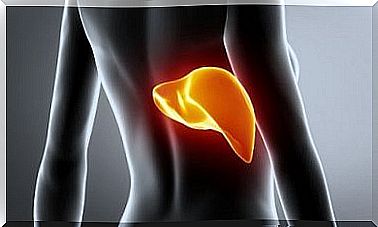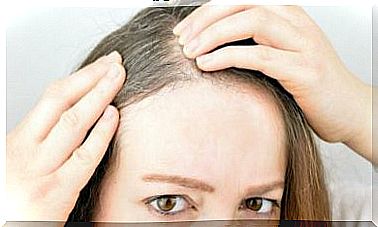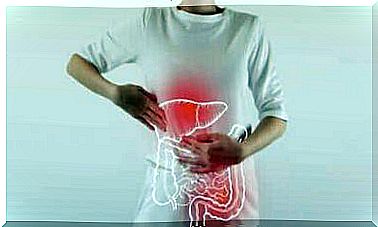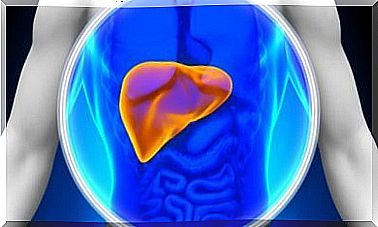The Sacral Dimple And How It Affects Children
Sacral dimples can be a simple indentation in the skin, but some can also be traced back to developmental causes. Today’s article will go into these in detail, along with the implications.

Some babies have a small indentation in the lumbar region, also known as the sacral area. This is where the sacrum is located. The sacral dimple can be a simple depression that does not cause any discomfort. However, this depression sometimes connects to the spinal canal and can cause problems in the nervous system.
Today’s article will go into this in more detail and also point out possible treatments.
What is a sacred dimple?
As mentioned earlier, a sacral dimple is a notch or indentation that occurs in the lower back. It’s present from birth and is usually located just above the gluteal fold.
Most sacral dimples are harmless; however, a significant percentage is associated with spinal dysraphism. This refers to certain congenital anomalies that, according to an article in Acta Pediátrica, lead to incomplete closure of certain structures, such as B. the spine, can lead.
This is a heterogeneous group of malformations that expose the neural tissue. The same study says that between 40 and 95% of babies with spinal dysraphism have some type of skin disorder. In many of these cases it is a sacral dimple.
A sacral dimple should be taken seriously if it is located near a tuft of hair or if there are changes in the color of the skin in the immediate vicinity. The problem is that in these cases, the neural change can cause neurological, urinal, rectal, or even orthopedic problems. It is therefore important to recognize and treat the different types.
Types of sacral dimples
A sacral dimple can be typical or atypical. There is the differentiation between a favorable location and something serious. A typical or simple sacral dimple is small and located in the fold between the buttocks.
They are usually less than 5 millimeters in diameter and are located near the edge of the anus. They are quite common and do not pose a risk of dysraphism. It is estimated that almost 5% of healthy newborns have such a sacral dimple.
In contrast, atypical dimples are larger, over 6.35 millimeters deep, and farther from the anus. You can even be further to the side of your body.
An atypical dimple is a risk factor for spinal dysraphism. If it is too deep, it can even lead to impaired communication with the spinal canal. This consists of a delicate structure through which numerous nerve fibers run.
This can lead to spinal and neurological damage. This type of dimple can also be accompanied by changes in skin color, knots, or even unusual hair growth in places.
The difference between a sacral dimple and a pilonidal cyst
A pilonidal cyst contains hair formations inside. As with sacral dimples, it occurs in the intergluteal area, i.e. directly above the buttocks.
Hair, cells, waste, and fluid collect in a pilonidal cyst. It also usually develops after birth, is more common in men, and is often affected by infections. The consequences are severe pain and swelling.
Causes of sacral dimples
The causes of sacral dimples are not yet clear. However, you know that it is something innate. This makes it possible to distinguish it from the pilonidal cyst, as mentioned above.
Atypical dimples can result from this defect in the closure of the midline structures. However, it is not known why they arise.
Symptoms and Diagnosis

In general, sacral dimples are asymptomatic. That’s because it’s just a dimple, a change in the skin on your lower back.
Symptoms of atypical sacral dimples usually depend on whether they are due to spinal dysraphism. A doctor will need to do a thorough physical exam to detect them.
This usually involves first checking the properties of the dimple and then performing a series of additional tests if it is too large or deep. The same goes if there are multiple dimples or discoloration of the skin, or if it is too far from the anus.
According to a study published in Archives of Disease in Childhood, sacral dimples can be easily examined using an ultrasound. It is estimated that the likelihood of a spinal problem increases six times if there are abnormalities.
Ultrasound is a preferred method because it is quick, safe, and inexpensive. However, there is also the option of an MRI if there is any doubt about the diagnosis. This allows the tissue to be examined more closely.
Possible complications
Atypical dimples are more likely to be affected by complications and may be related to spina bifida or tethered spinal cord syndrome, among other things.
Spina bifida is a congenital malformation. The neural tube does not close properly. There are several types, but the one related to the sacral dimple is called the Spina Bifida Occulta.
Its main feature is a small gap in the spine that arises because it has not developed. It can be asymptomatic and is usually only discovered in adolescence or adulthood.
In contrast, tethered spinal cord syndrome occurs when scar tissue is anchored to the spinal cord. This can lead to urinary and fecal incontinence, weakness in the lower extremities, and even difficulty standing.
Treatment of sacral dimples
There is no treatment for a simple sacral dimple, nor is it necessary. All you want to do is keep dirt from building up in this area to avoid infection. Because the dimple is close to the anus, intestinal bacteria could contaminate it.
It is therefore important to properly cleanse this area of the body in babies, especially when changing diapers. An atypical dimple may require treatment, depending on its severity.
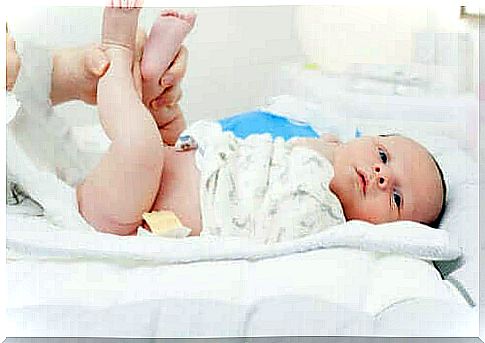
The procedure depends on the stage of the sacral dimple
Ideally, all newborns should be thoroughly examined by a doctor. They should also conduct an examination of the sacral dimple, should they find one. Such an examination consists of measuring the dimple and other anomalies.
If everything else is normal and the sacral dimple is small, the child should be in good health. However, if the dimple is abnormal or there are other warning signs, the baby will need a specialist.
Doctors need to examine a dimple closely to see if there are any neurological changes or developmental defects. Depending on the findings, the best treatment must be found.
Finally, one should not forget that most sacral dimples are harmless and represent a pure change in the skin. Still, a doctor should be seen to rule out a neurological problem.
